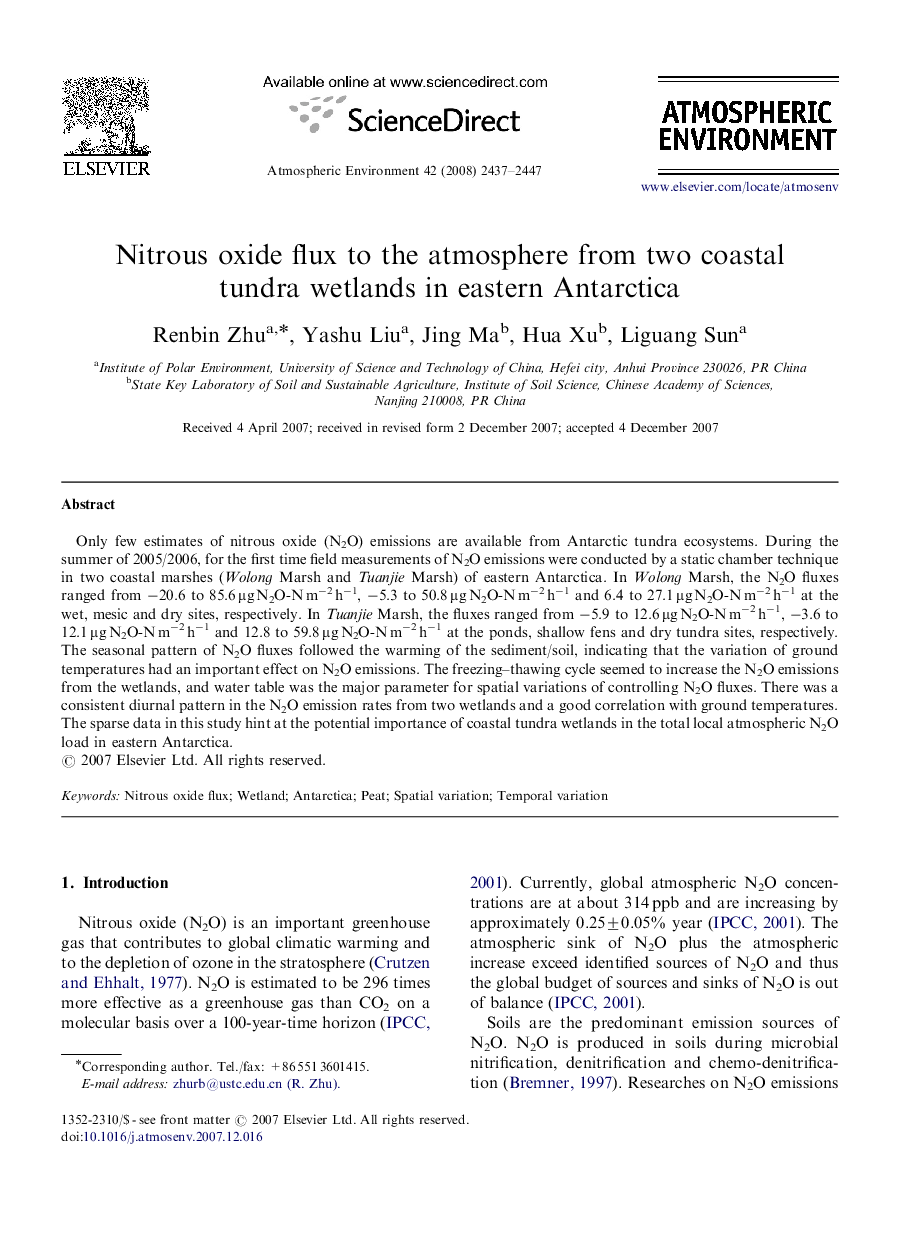| Article ID | Journal | Published Year | Pages | File Type |
|---|---|---|---|---|
| 4442505 | Atmospheric Environment | 2008 | 11 Pages |
Only few estimates of nitrous oxide (N2O) emissions are available from Antarctic tundra ecosystems. During the summer of 2005/2006, for the first time field measurements of N2O emissions were conducted by a static chamber technique in two coastal marshes (Wolong Marsh and Tuanjie Marsh) of eastern Antarctica. In Wolong Marsh, the N2O fluxes ranged from −20.6 to 85.6 μg N2O-N m−2 h−1, −5.3 to 50.8 μg N2O-N m−2 h−1 and 6.4 to 27.1 μg N2O-N m−2 h−1 at the wet, mesic and dry sites, respectively. In Tuanjie Marsh, the fluxes ranged from −5.9 to 12.6 μg N2O-N m−2 h−1, −3.6 to 12.1 μg N2O-N m−2 h−1 and 12.8 to 59.8 μg N2O-N m−2 h−1 at the ponds, shallow fens and dry tundra sites, respectively. The seasonal pattern of N2O fluxes followed the warming of the sediment/soil, indicating that the variation of ground temperatures had an important effect on N2O emissions. The freezing–thawing cycle seemed to increase the N2O emissions from the wetlands, and water table was the major parameter for spatial variations of controlling N2O fluxes. There was a consistent diurnal pattern in the N2O emission rates from two wetlands and a good correlation with ground temperatures. The sparse data in this study hint at the potential importance of coastal tundra wetlands in the total local atmospheric N2O load in eastern Antarctica.
